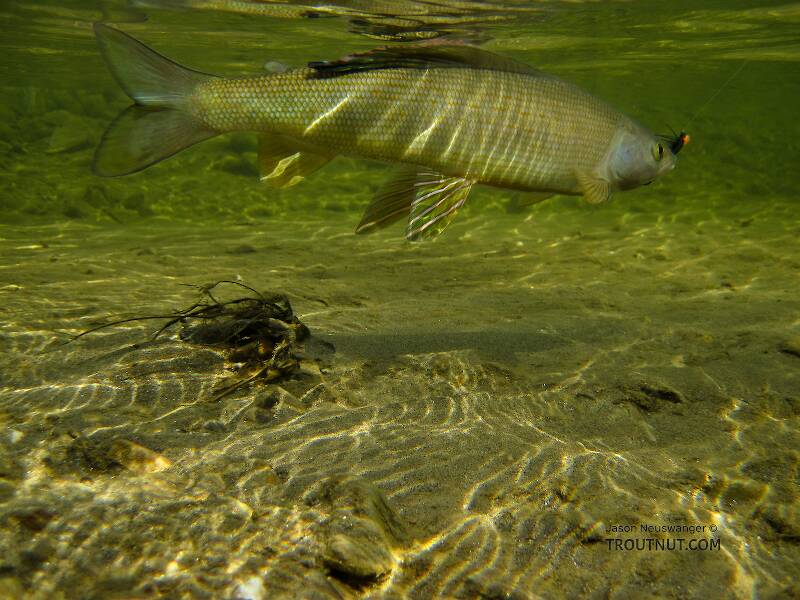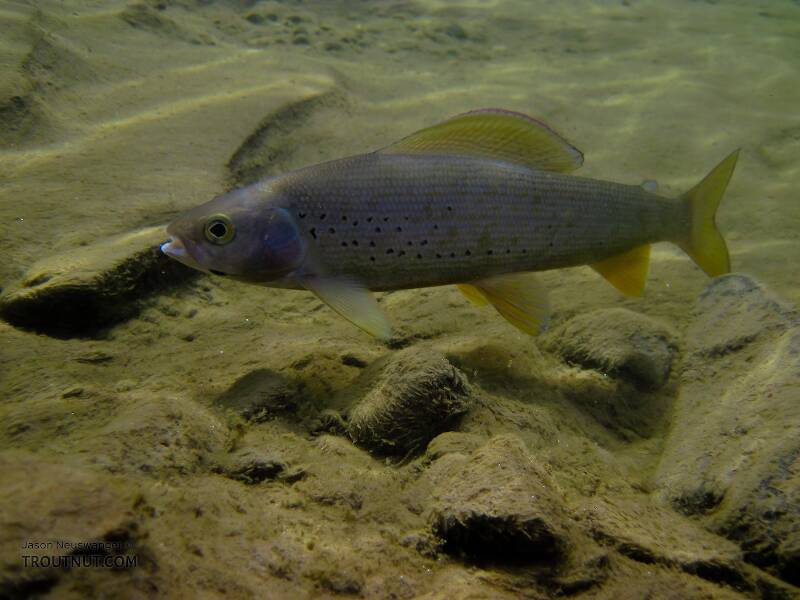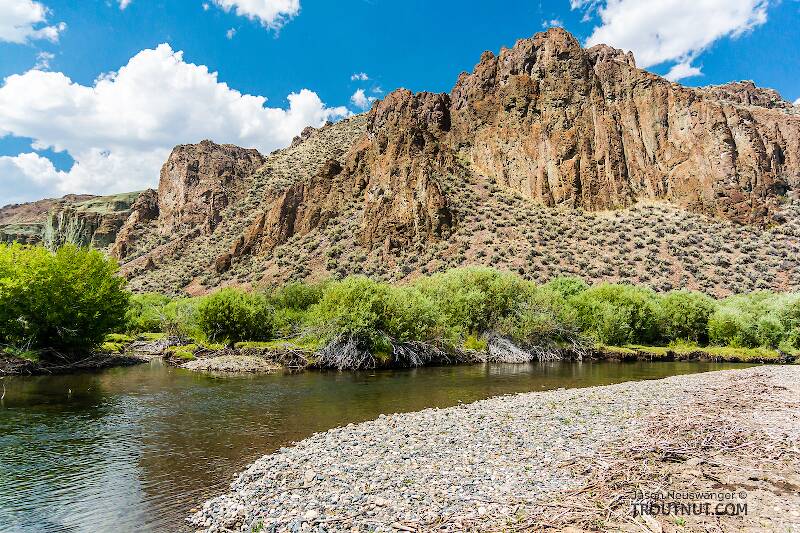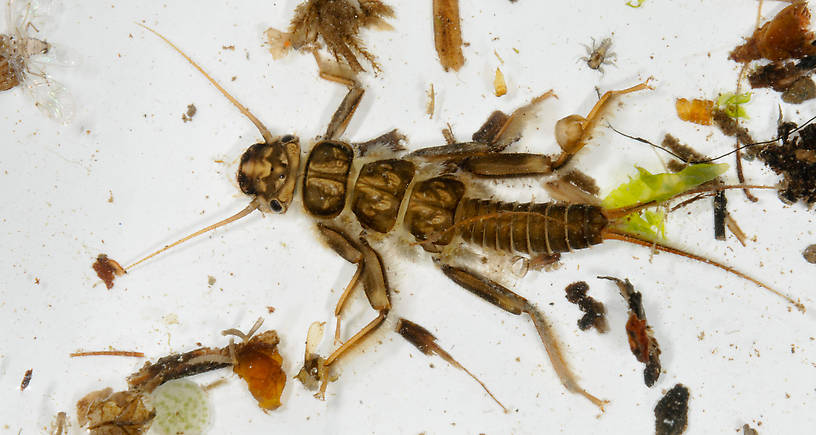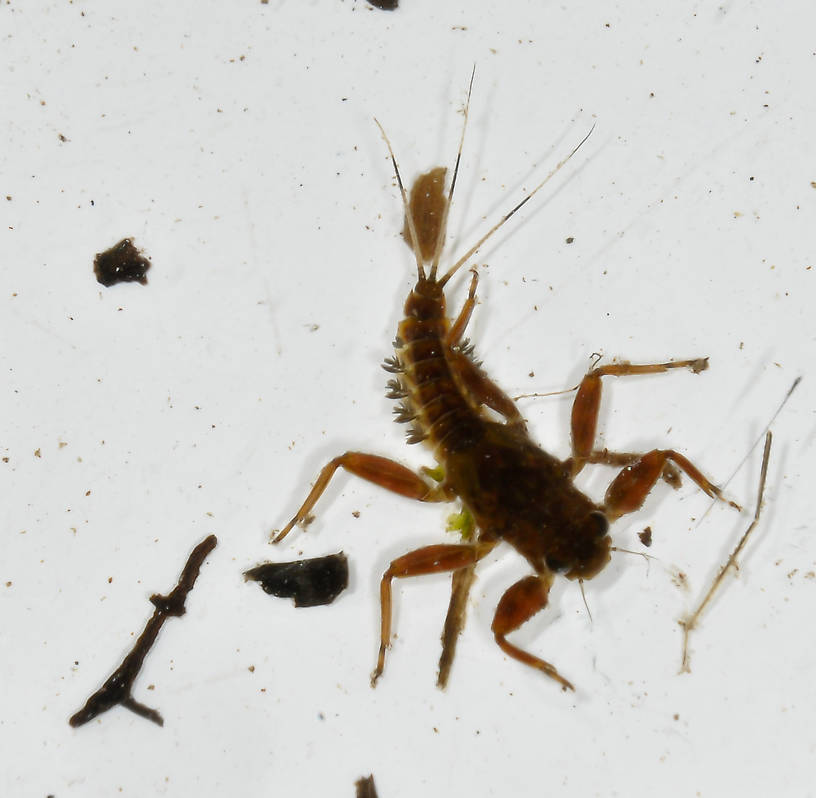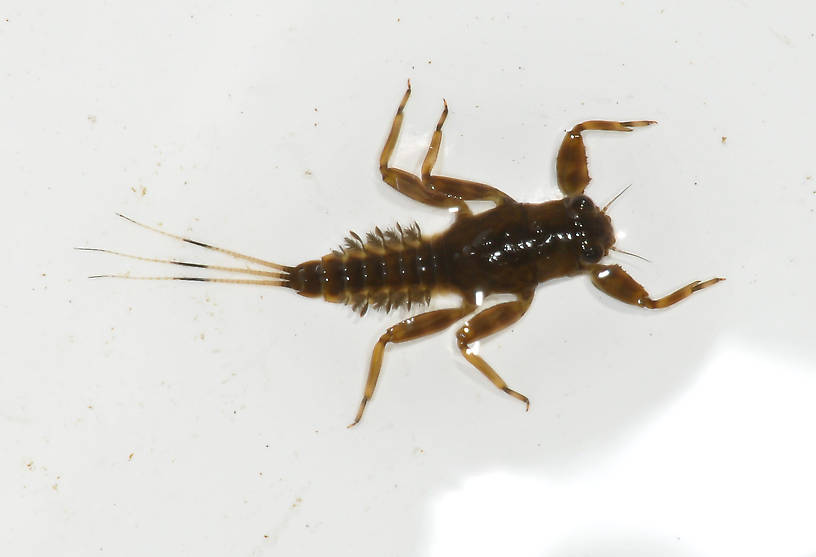
Blue-winged Olives
Baetis
Tiny Baetis mayflies are perhaps the most commonly encountered and imitated by anglers on all American trout streams due to their great abundance, widespread distribution, and trout-friendly emergence habits.
Featured on the forum

This species was fairly abundant in a February sample of the upper Yakima.

Troutnut is a project started in 2003 by salmonid ecologist Jason "Troutnut" Neuswanger to help anglers and
fly tyers unabashedly embrace the entomological side of the sport. Learn more about Troutnut or
support the project for an enhanced experience here.
Dipnetting for sockeye salmon in the Copper River at Chitina, Alaska
By Troutnut on August 11th, 2011
One of the perks of being an Alaska resident is that we can partake in several "personal use" fisheries that allow dip-netting for salmon. With harvest limits of up to 40 fish, they make it possible to have salmon as a staple of our diets, which we could never do by sport angling because of the 3-fish possession limit and the 10-hour round trip drive required to reach a decent salmon stream from Fairbanks. The crown jewel of Alaska's dipnetting sites is the sockeye salmon fishery at in the Copper River at Chitina. The salmon passing through here are very possibly the best-tasting fish in the world. Fed on plankton in the clean waters of Prince William Sound and the Gulf of Alaska, they stockpile unusually large amounts of tasty, healthy fatty acids in their firm, red flesh. The longer a salmon has to travel to reach its spawning grounds, the more fat it stores, so the tastiest salmon are those caught near the beginning of a journey up a very long river like the Copper or the Yukon.
Although "sporting" is the wrong word for dip-netting, it's much more challenging than most would expect. When I first heard about it, I pictured relaxed Alaskans standing on the bank of a clear, mid-sized river, nets laying on the ground as they watch and wait for salmon to appear. I had not imagined the thundering slurry of powdered mountain that is the Copper River at Chitina, a river the size of the Missouri squeezing through a bedrock canyon 100 meters wide. Most of the water is glacial melt, no clearer than chocolate milk, so densely is it loaded with the dust of the Alaska Range and the Wrangell Mountains. There's no outward sign of the thousands--sometimes tens of thousands--of salmon that pass through every day of the summer, inches below the opaque surface. The dip-netter perches on a narrow shelf of jagged rocks, holding a large net in the river continuously, fighting the force of the silt-laden current from the other end of a 15-foot metal pole. The telltale bump of a salmon in the net may come every few minutes, or hours apart, and I have spent about 12 hours on the net each year to obtain my limit. It's hard work to fill the freezer with this world-class delicacy.
Catch & release purists need not cringe at the sight of these photos: the Copper River sockeye salmon fishery is a sustainably managed, hatchery-supplemented fishery with limits and closures adjusted several times throughout the season by the Alaska Department of Fish & Game. The run each year contains more than enough salmon to replenish the population, especially with the hatchery's help, and the excess is split among commercial fishermen in Prince William Sound, native subsistence users who can each catch hundreds of salmon in their fish wheels, dip-netters in the "personal use" fishery, and a comparatively tiny harvest by sport anglers in clearer tributaries, mostly the Gulkana and Klutina rivers. Many of the fish we dipnet in the main stem Copper are destined for off-road tributaries that rarely see an angler, especially not a salmon angler. When someone fishes that far out into this part of the wilderness, they're in pursuit of grayling, dollies, or rainbows, not salmon.
Although "sporting" is the wrong word for dip-netting, it's much more challenging than most would expect. When I first heard about it, I pictured relaxed Alaskans standing on the bank of a clear, mid-sized river, nets laying on the ground as they watch and wait for salmon to appear. I had not imagined the thundering slurry of powdered mountain that is the Copper River at Chitina, a river the size of the Missouri squeezing through a bedrock canyon 100 meters wide. Most of the water is glacial melt, no clearer than chocolate milk, so densely is it loaded with the dust of the Alaska Range and the Wrangell Mountains. There's no outward sign of the thousands--sometimes tens of thousands--of salmon that pass through every day of the summer, inches below the opaque surface. The dip-netter perches on a narrow shelf of jagged rocks, holding a large net in the river continuously, fighting the force of the silt-laden current from the other end of a 15-foot metal pole. The telltale bump of a salmon in the net may come every few minutes, or hours apart, and I have spent about 12 hours on the net each year to obtain my limit. It's hard work to fill the freezer with this world-class delicacy.
Catch & release purists need not cringe at the sight of these photos: the Copper River sockeye salmon fishery is a sustainably managed, hatchery-supplemented fishery with limits and closures adjusted several times throughout the season by the Alaska Department of Fish & Game. The run each year contains more than enough salmon to replenish the population, especially with the hatchery's help, and the excess is split among commercial fishermen in Prince William Sound, native subsistence users who can each catch hundreds of salmon in their fish wheels, dip-netters in the "personal use" fishery, and a comparatively tiny harvest by sport anglers in clearer tributaries, mostly the Gulkana and Klutina rivers. Many of the fish we dipnet in the main stem Copper are destined for off-road tributaries that rarely see an angler, especially not a salmon angler. When someone fishes that far out into this part of the wilderness, they're in pursuit of grayling, dollies, or rainbows, not salmon.
Photos by Troutnut from the Copper River in Alaska
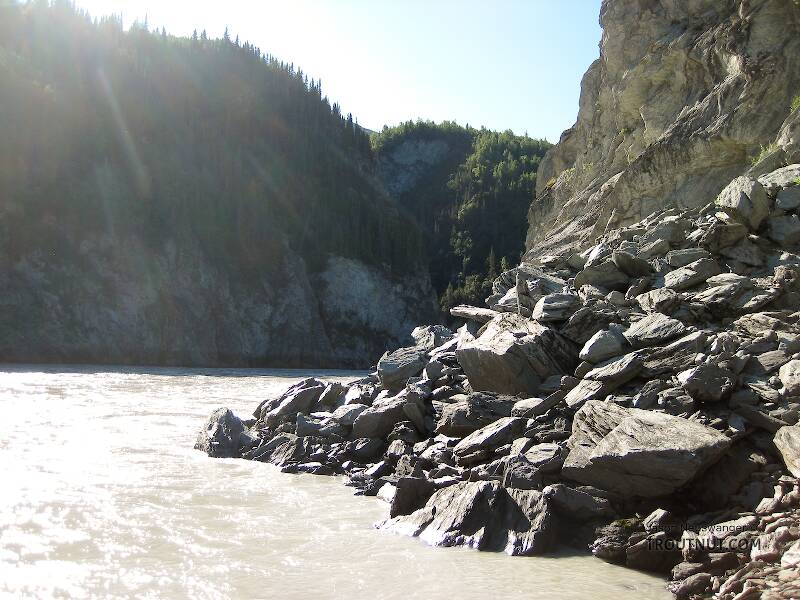
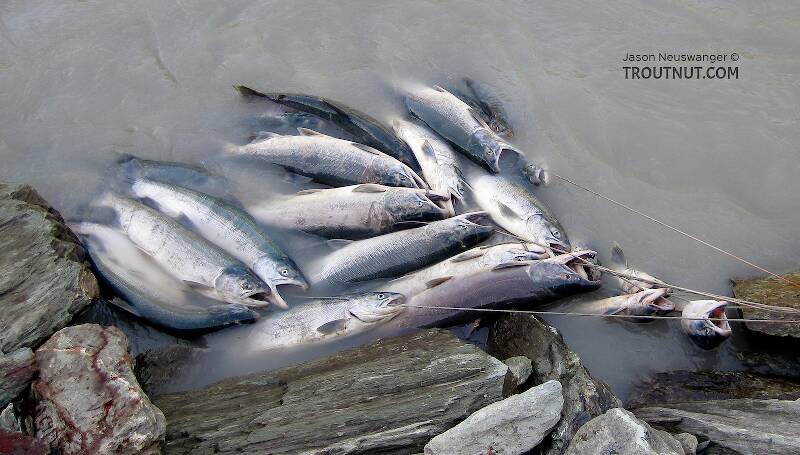
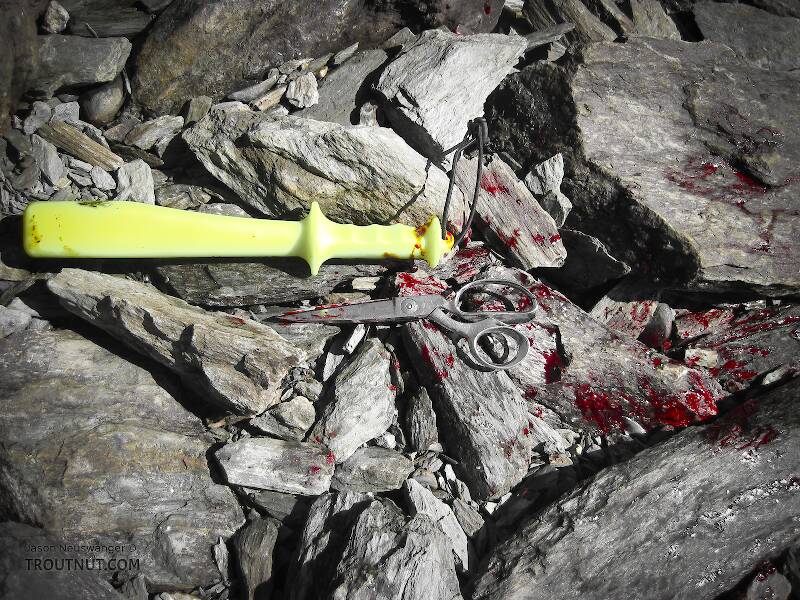
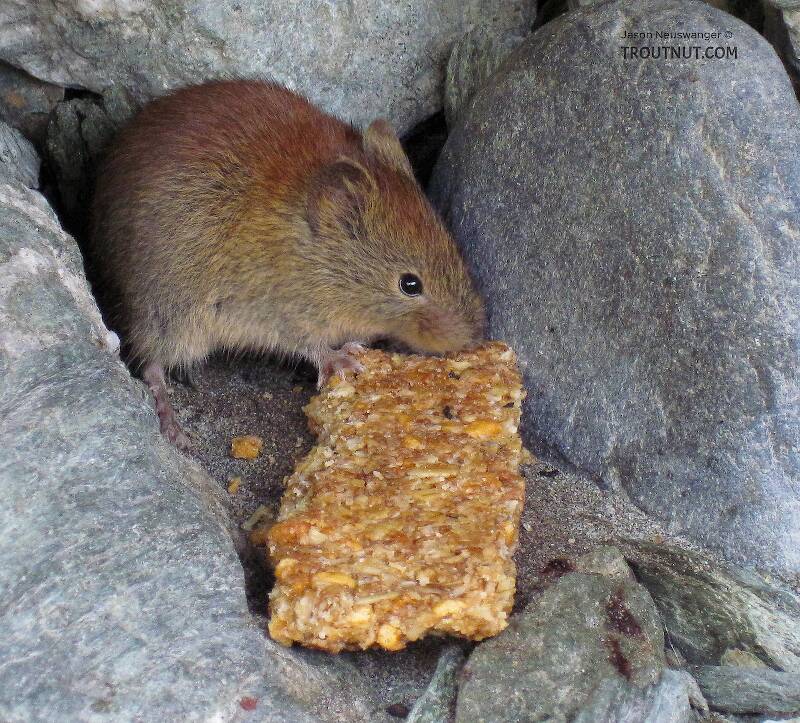
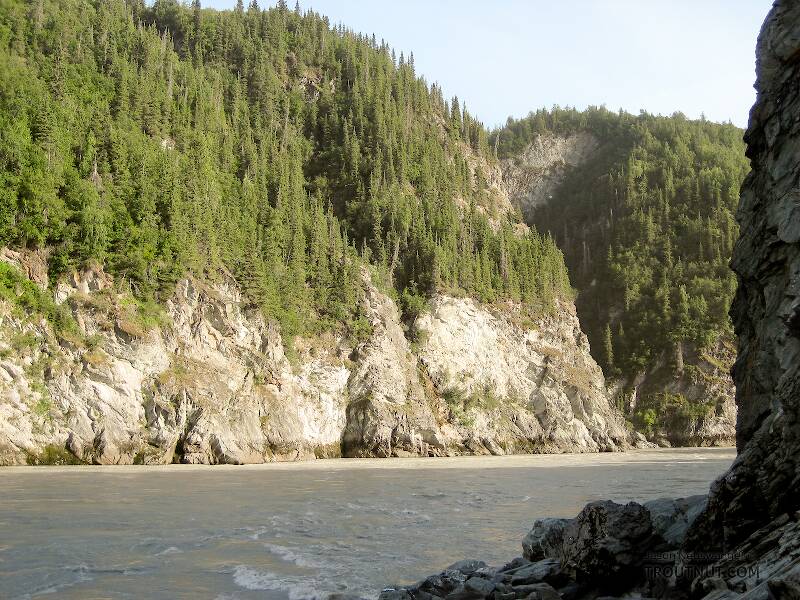
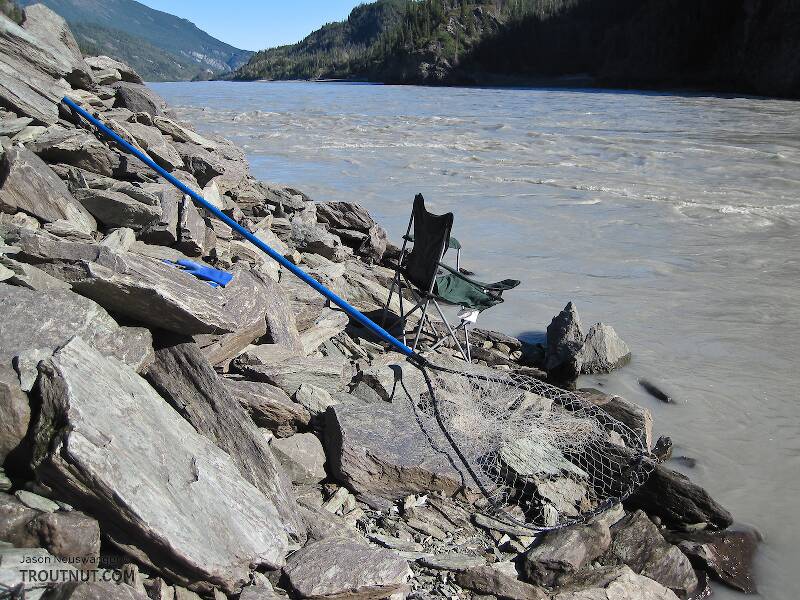
Closeup insects by Bnewell from the Touchet River in Washington
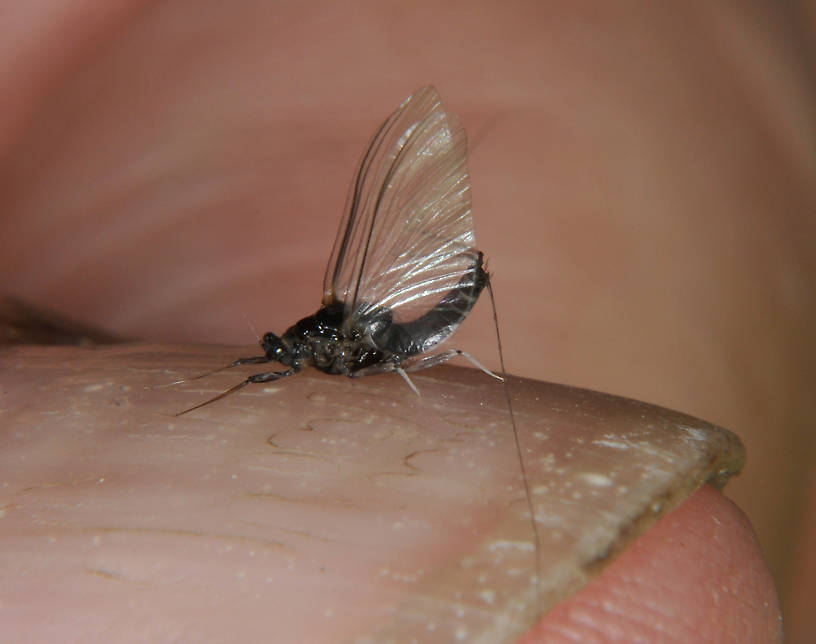
I collected these males about 9:30 AM, air temp. about 68 degrees F. The males were flying about 3 ft above the stream flying up and down the stream rather than the typical vertical swarm you see with most mayfly males. The males are black and the females are a green color due to the eggs they are carrying. They do not live very long which is typical for small bodied mayflies. They do not fly during windy conditions. I suspect these are Tricorythodes minutus.
Driving down the Richardson to Chitina, with a stop at the Gulkana
By Troutnut on August 10th, 2011
I had good photo weather for the 7-hour drive from Fairbanks down to Chitina for the dip-netting trip detailed in the August 12th update. I stopped for a few hours at the upper Gulkana River along the way, hoping to catch grayling in a promising new spot I'd found (but not fished) on an earlier trip. That stretch of river is so enchanting one could spend a lifetime on a single mile of it and never want to leave. I was amazed to find no sign of grayling, except for another angler who said the spot fishes well earlier in the summer. I fished behind spawning sockeye salmon and caught only a round whitefish, and was treated to the sight of caribou crossing the river upstream. I think the spawning salmon have something to do with the lack of grayling, no doubt an interesting story I have yet to figure out.
Photos by Troutnut from the Gulkana River, Summit Lake, the Copper River, Miscellaneous Alaska, and the Delta River in Alaska
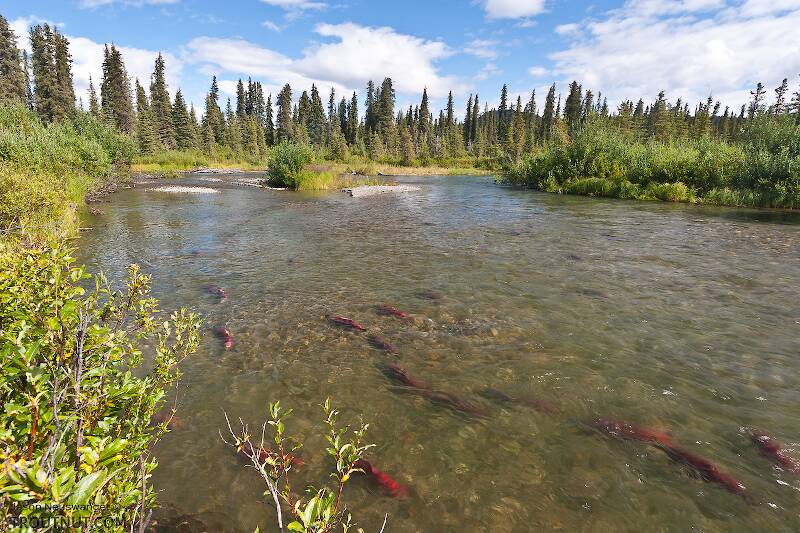
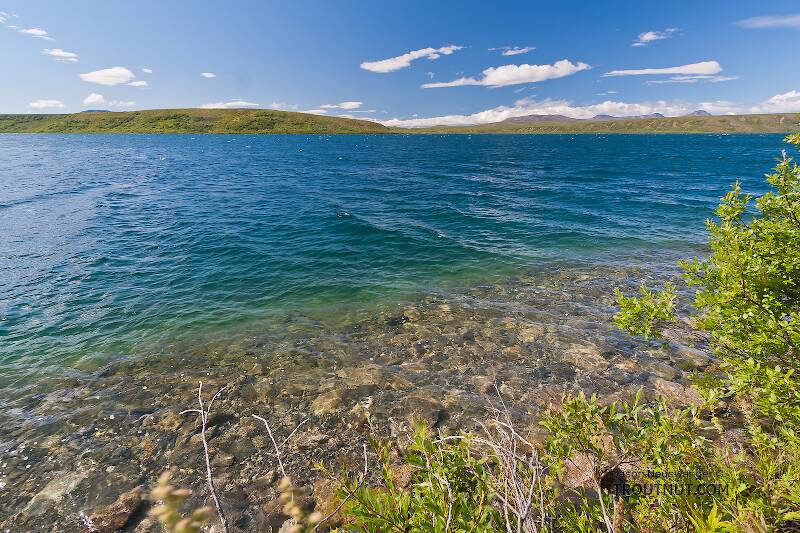
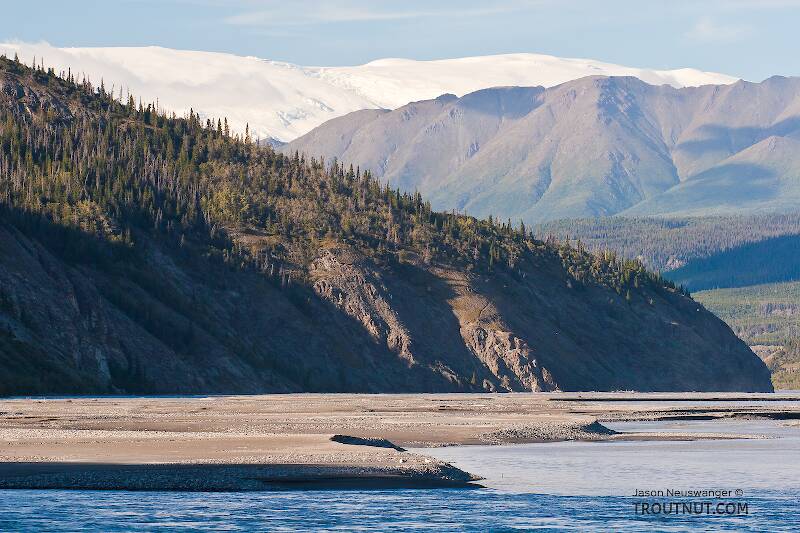

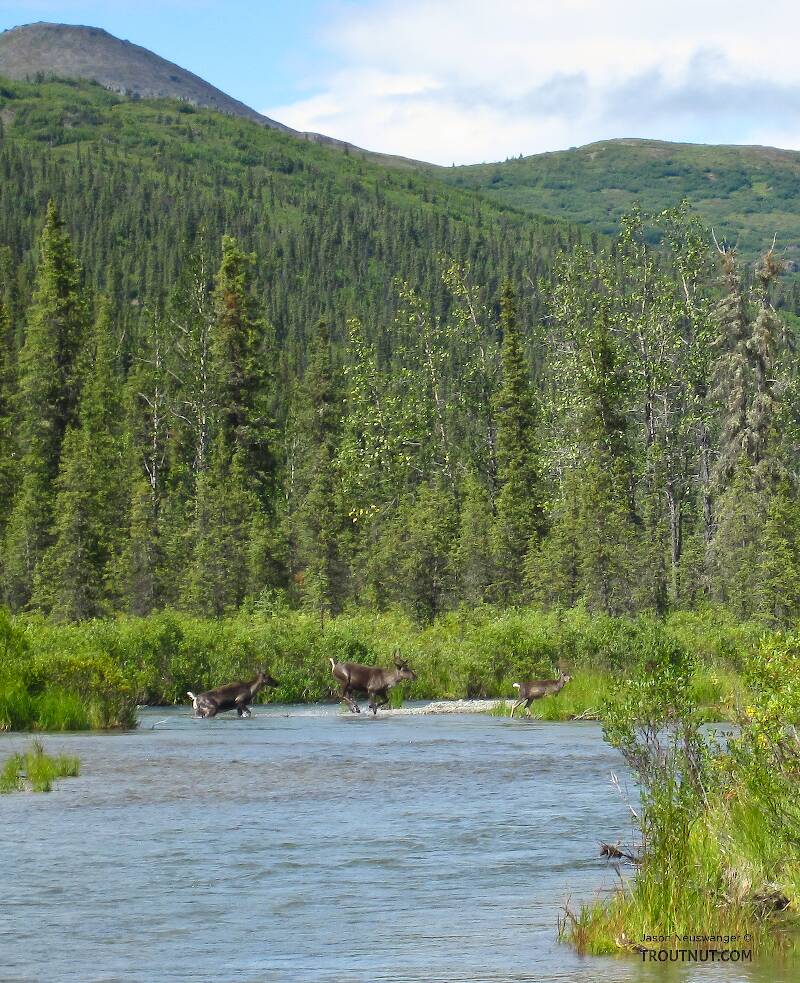
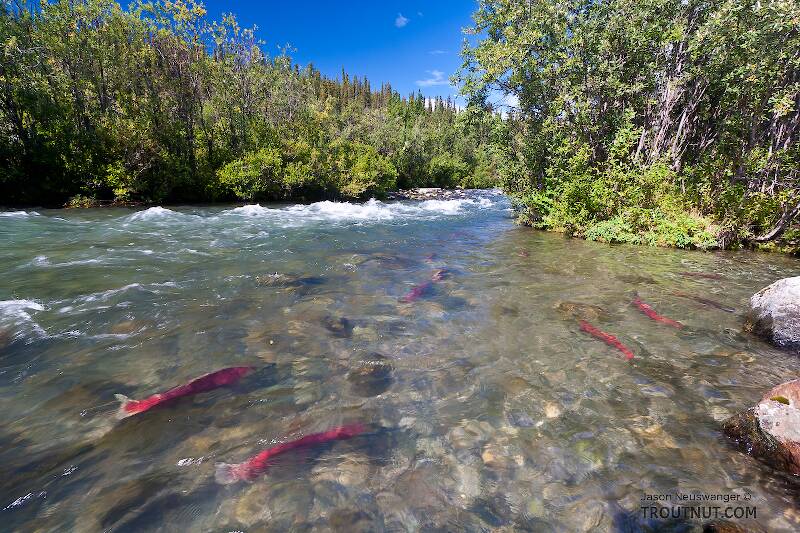
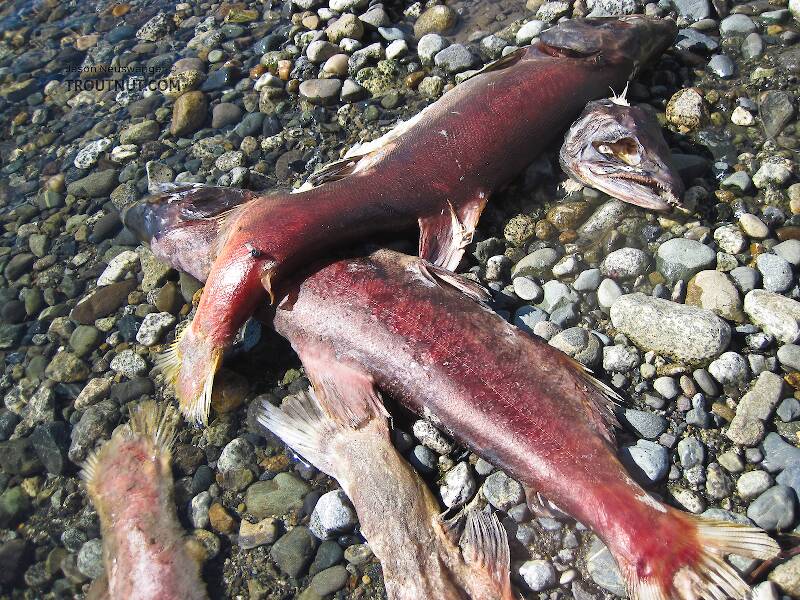
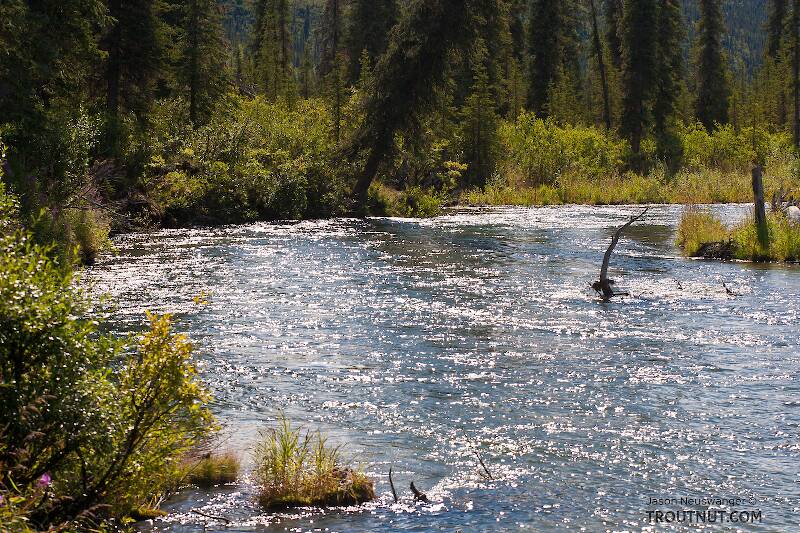
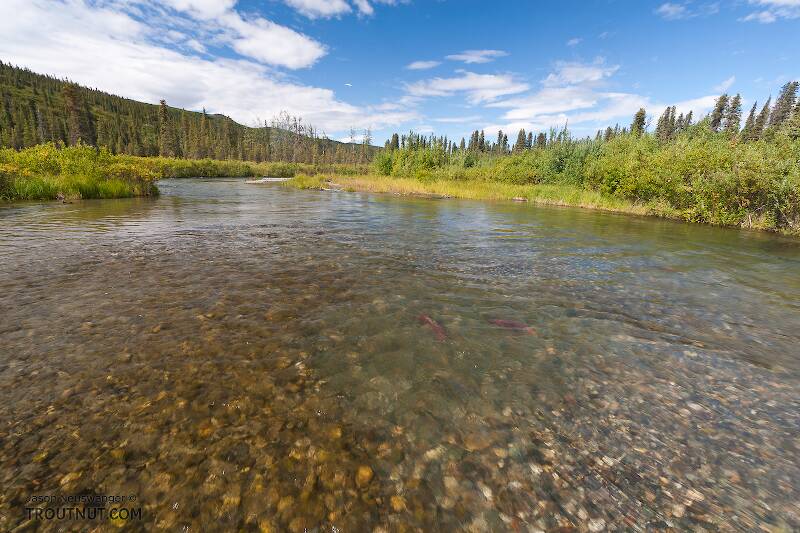
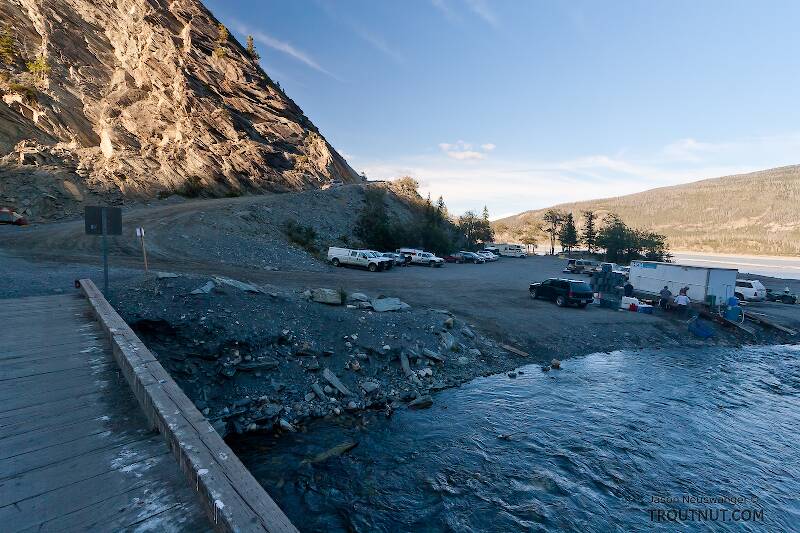
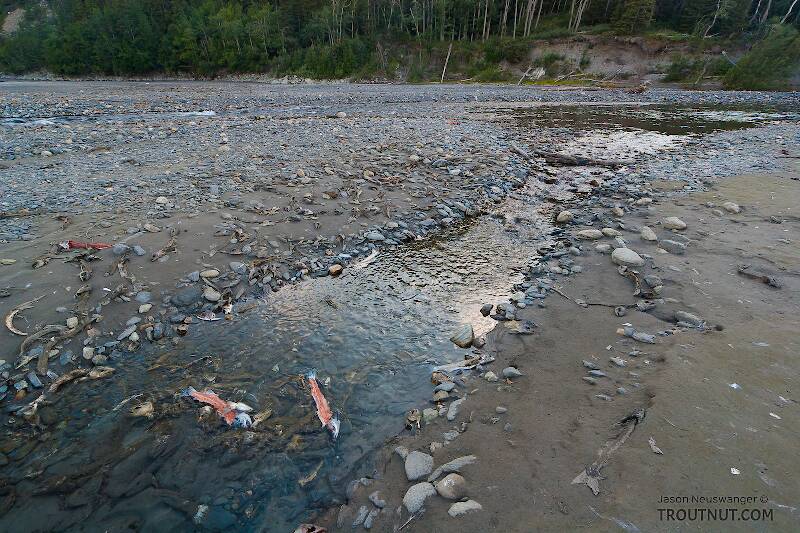
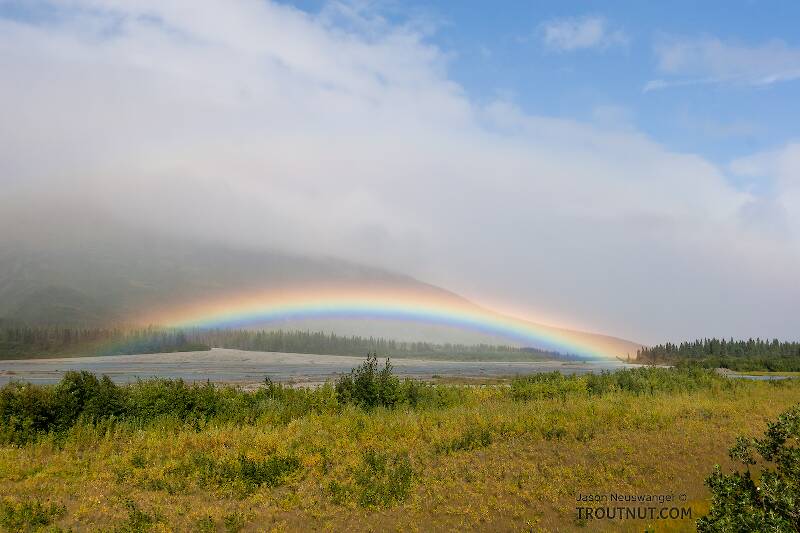
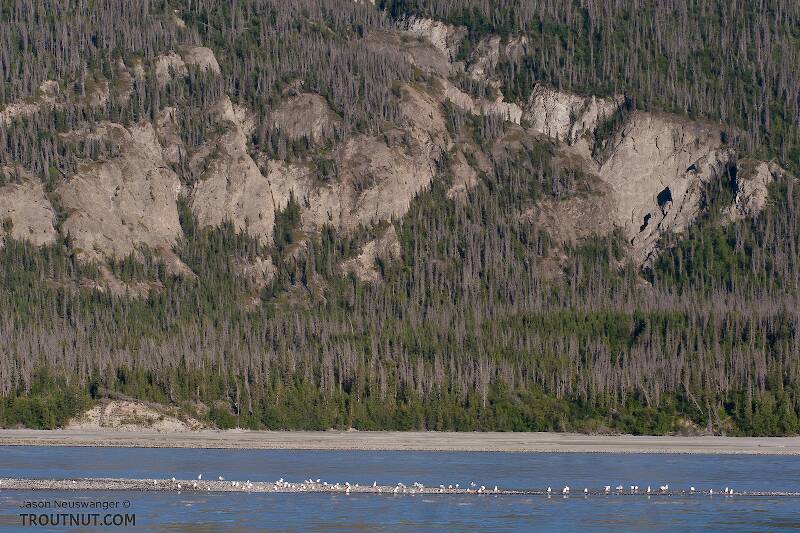
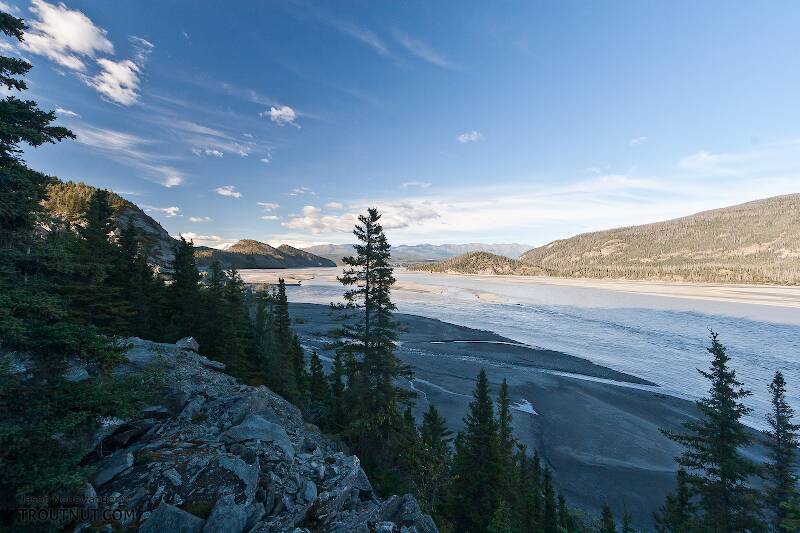
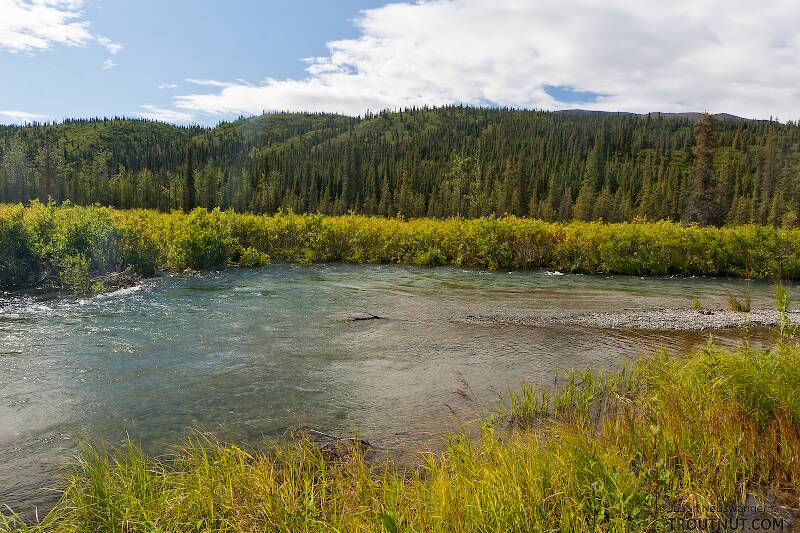
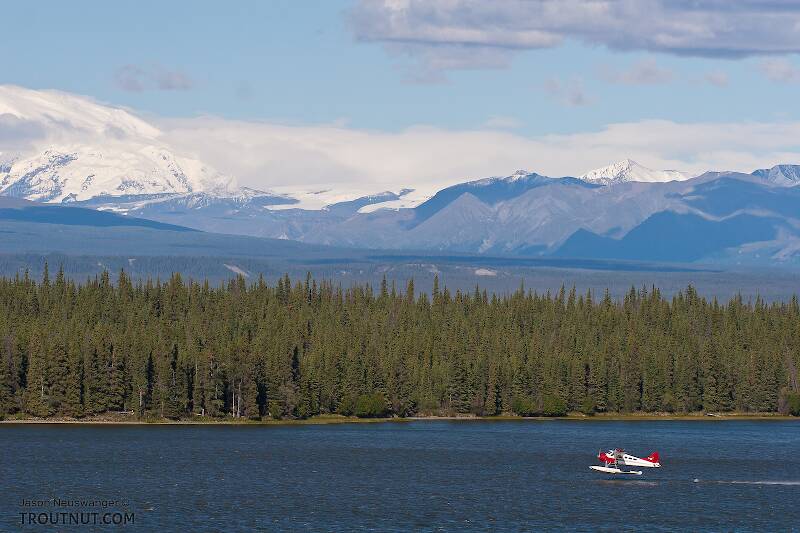
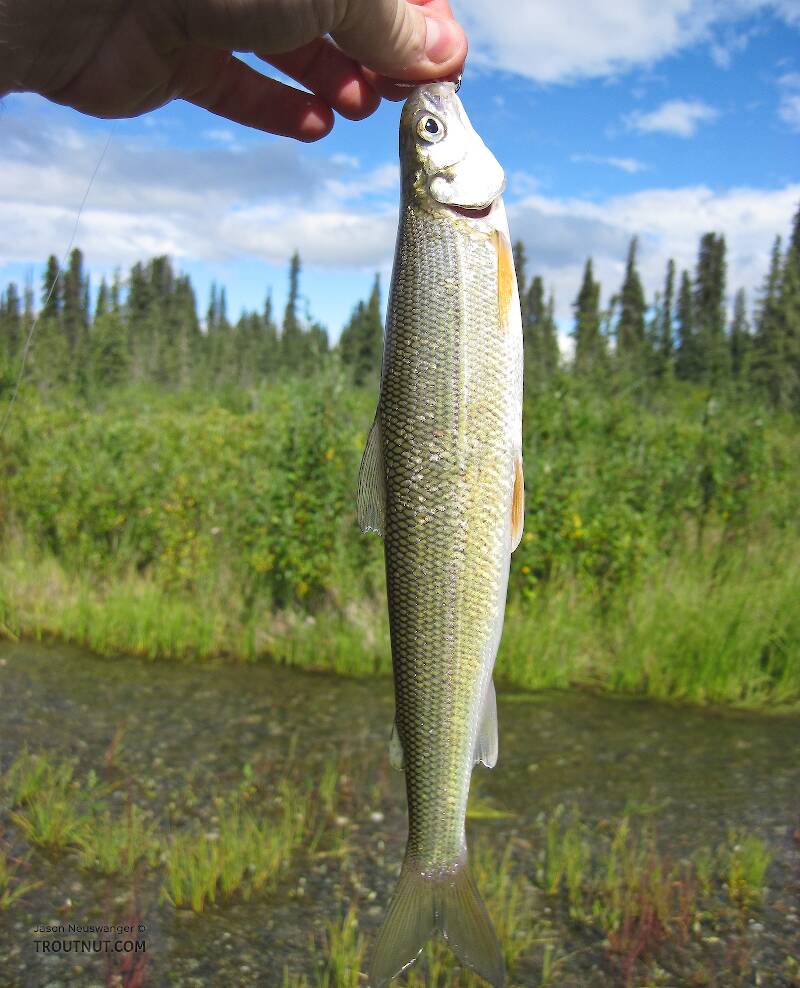
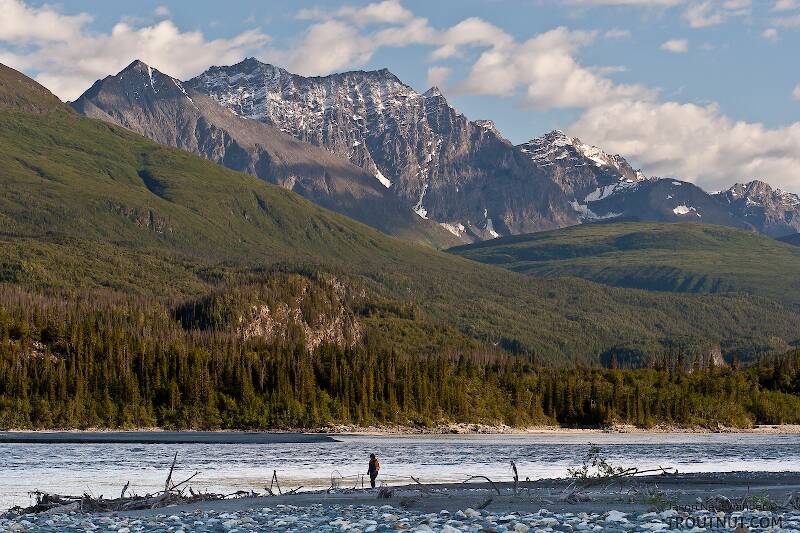
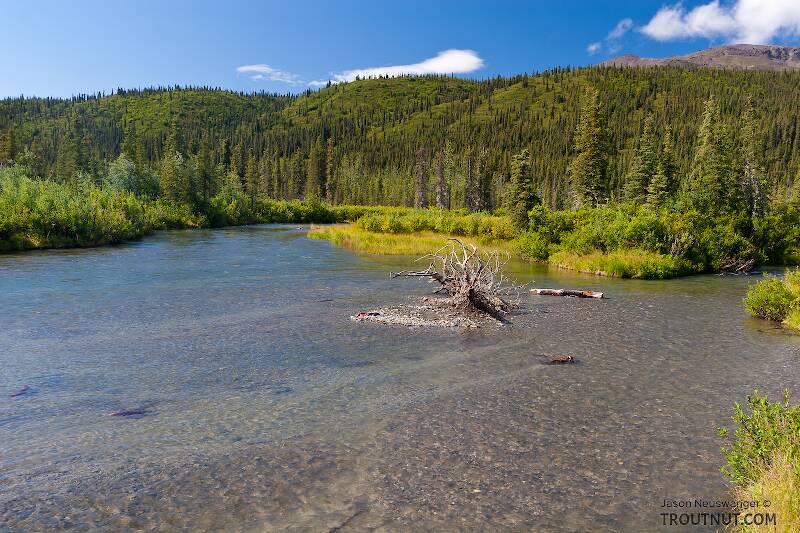
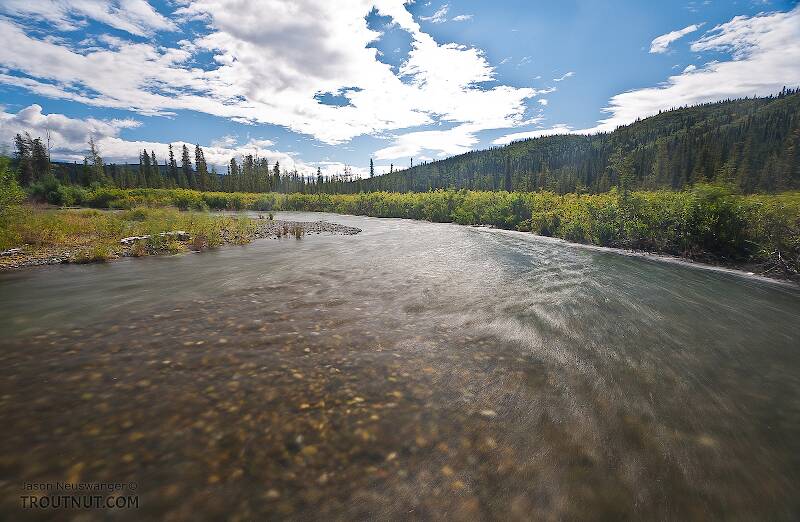
Updates from August 9, 2011
Closeup insects by Bnewell from the Touchet River in Washington
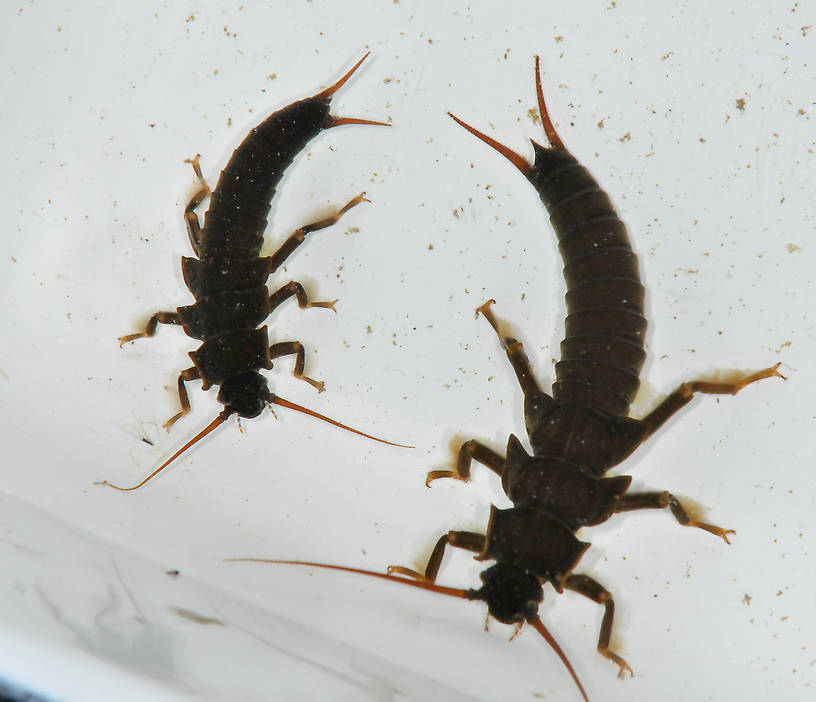
Here are two size classes of Pteronarcys nymphs. These probably represent two different generations. The largest will probably emerge next spring and the other in two years. There is probably another generation, smaller, I did not collect. In a Canadian study they discovered Pteronarcys eggs do not all hatch simultaneously but hatch for a period of nearly two years, making their egg/nymphal life 5 years. The other photo is of a curled nymph, a typical response to disturbance.
Updates from August 8, 2011
Underwater photos by Bnewell from the Touchet River in Washington
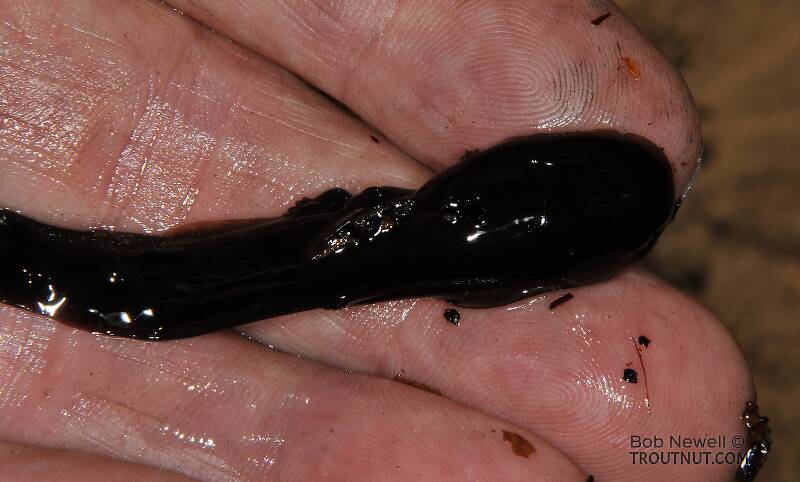
Closeup insects by Bnewell from the Touchet River in Washington
Day float on the Chatanika River
By Troutnut on August 5th, 2011
I headed out with a friend & his canoe to float the Chatanika River. It's a popular river to float, so naturally it wouldn't be adventurous unless we decided to do something crazy, like float dozens of miles upstream from where people usually put in. We had some fine dragging and even a little bit of paddling, and many remote pools held eager grayling that rarely see a fly.
Photos by Troutnut from the Chatanika River in Alaska
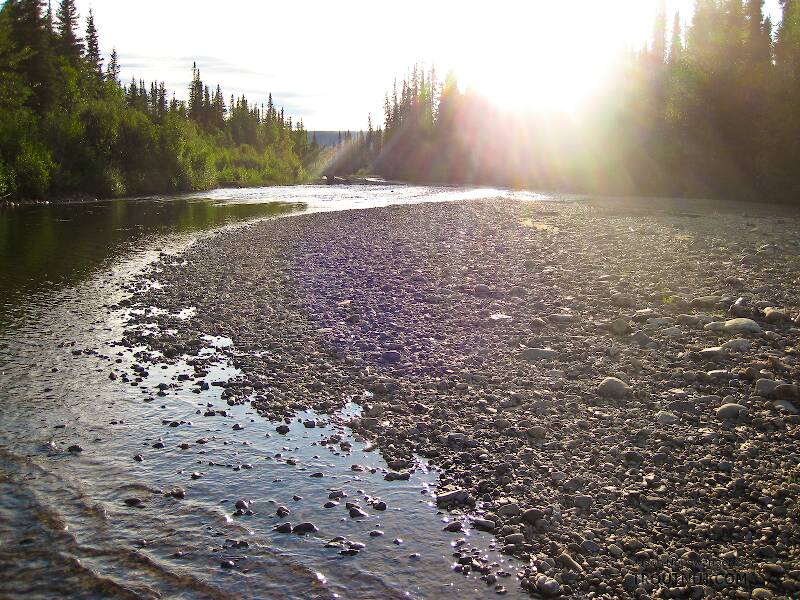
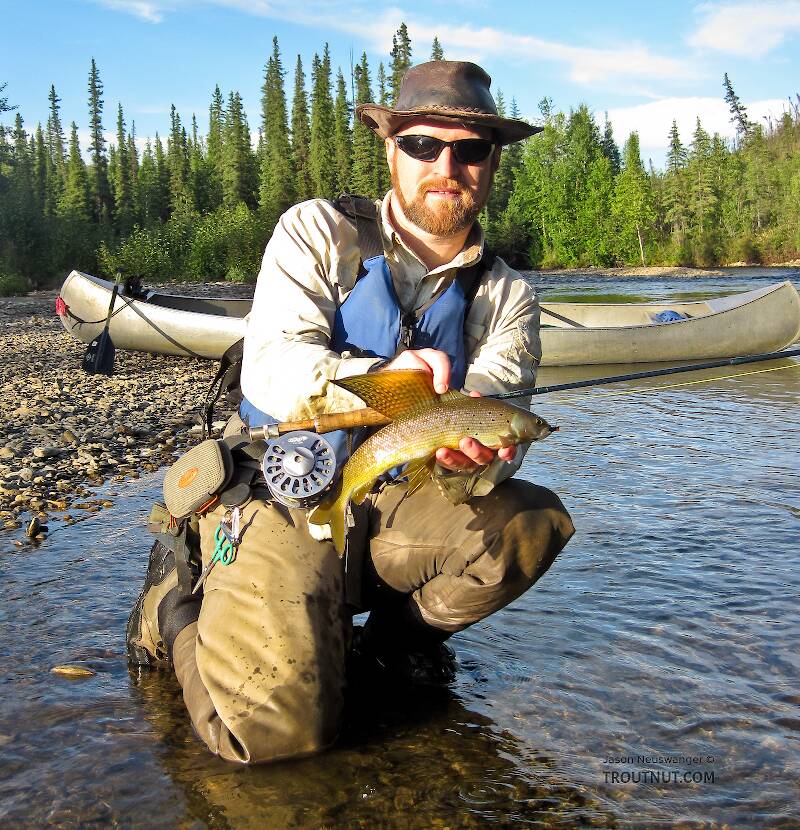
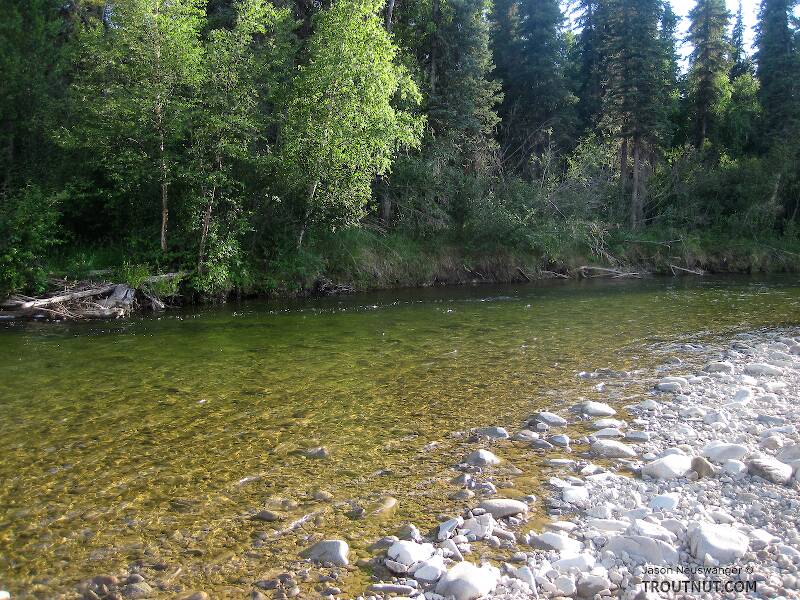
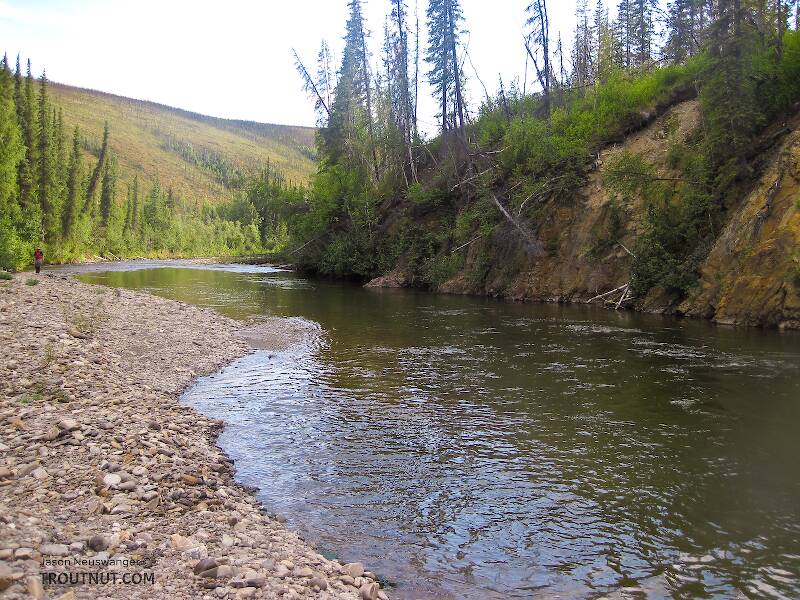
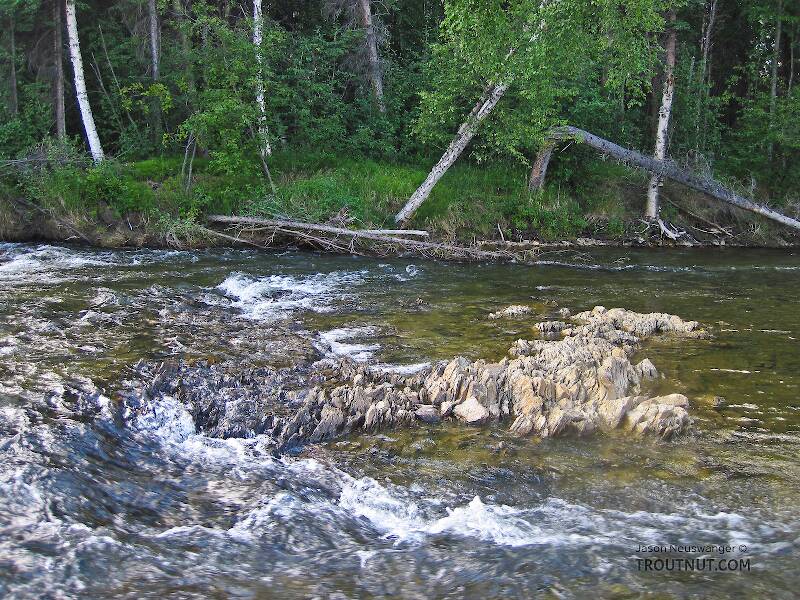
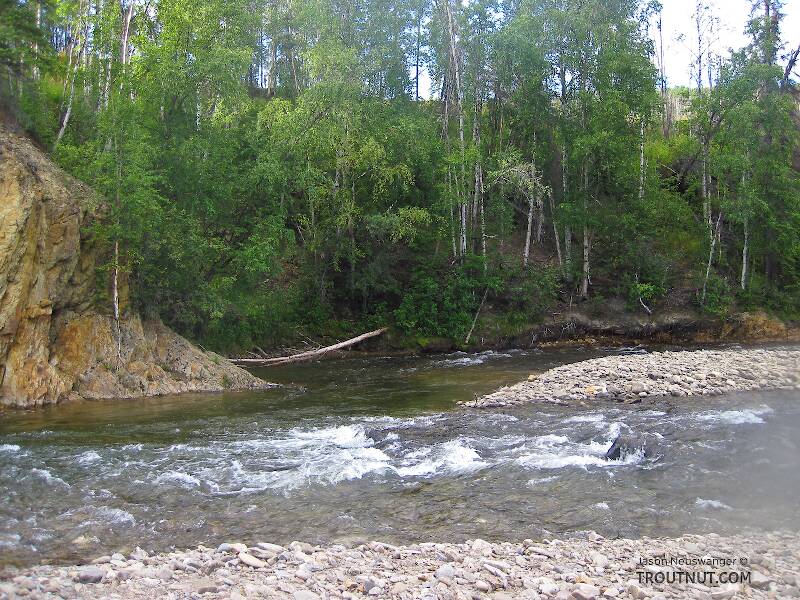
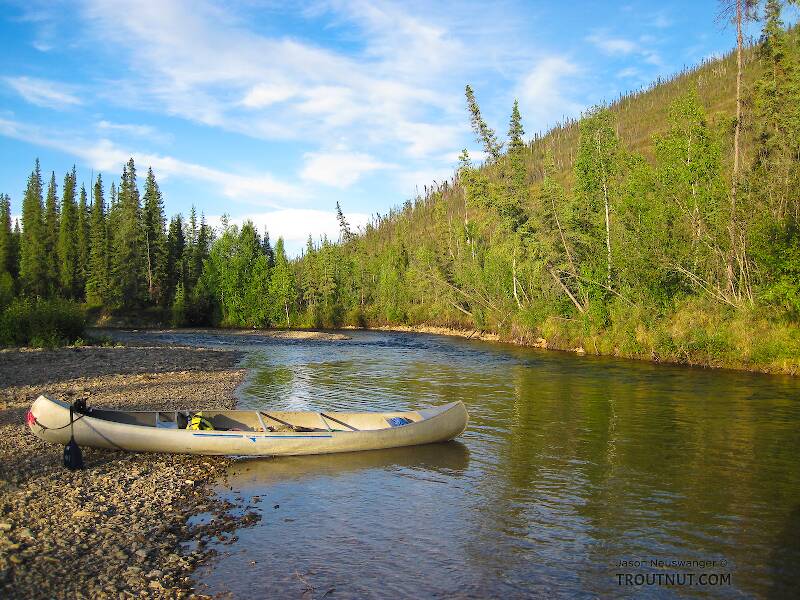
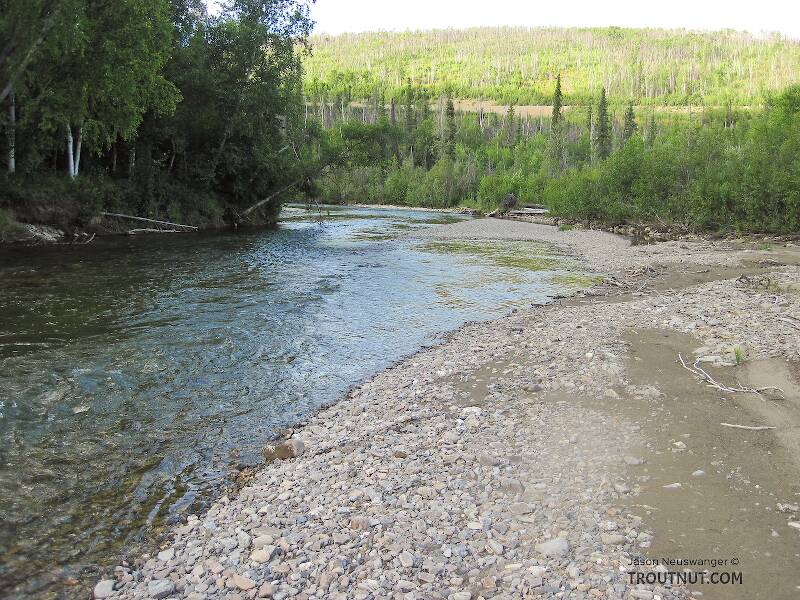
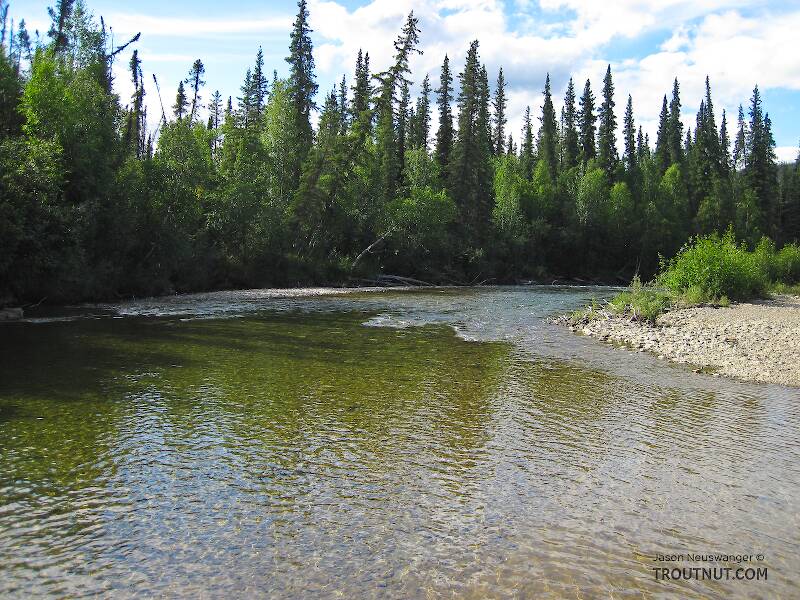
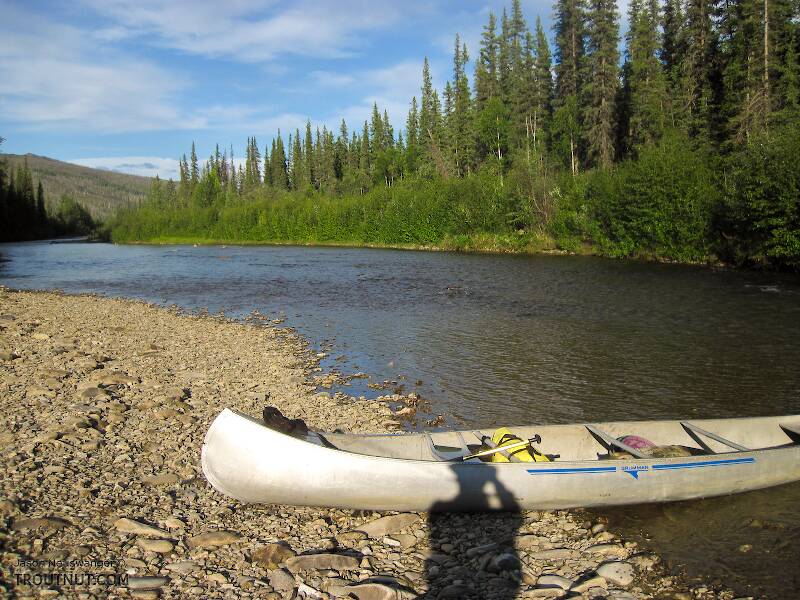
Underwater photos by Troutnut from the Chatanika River in Alaska
